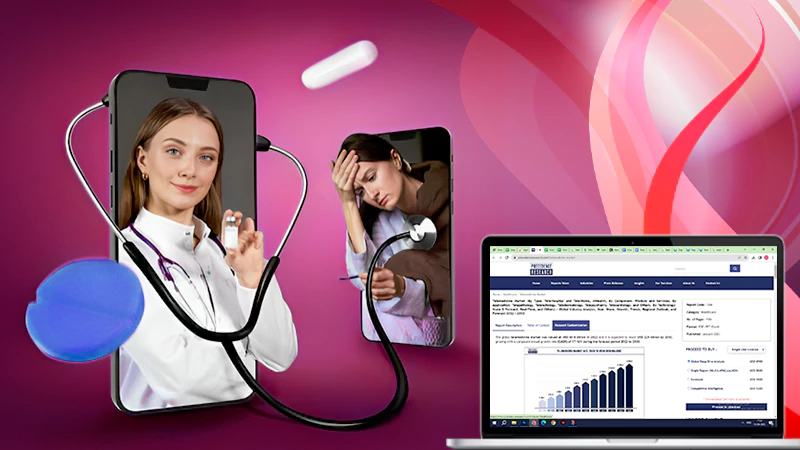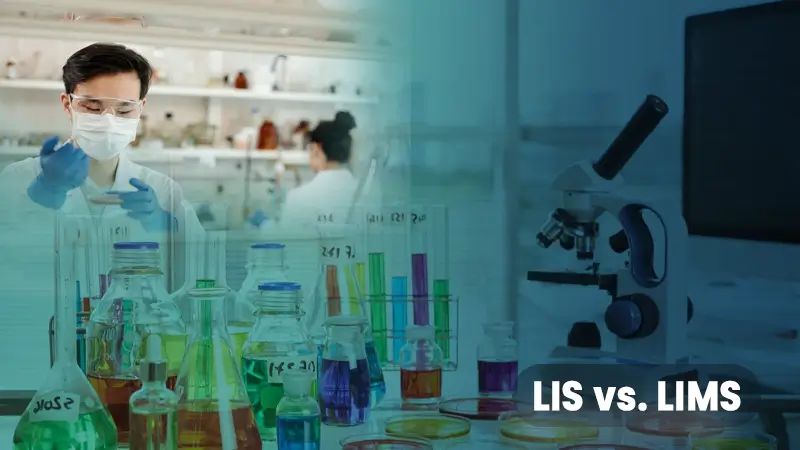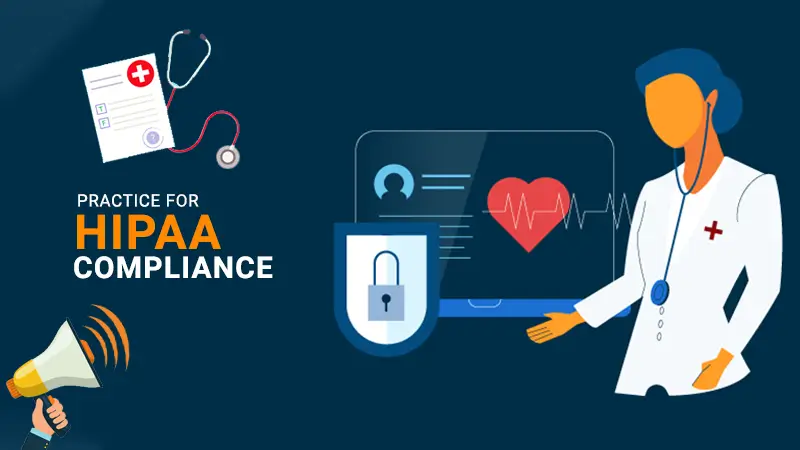How Healthcare Industry Leverages Machine Learning Through Wearables
Wearable technology has leapfrogged tremendously in the past decade. All the devices humans can wear come under the umbrella of wearable devices. For example, wristwatches, glasses, chest straps, rings, prosthetic sockets, and more.
Many wearable devices in the current healthcare market analyze data from a patient’s health signs and help doctors identify patients at risk. With advancements in technologies, wearables offer a seamless opportunity for monitoring human physiological signals and processing an easy human-machine interaction.
The low-power sensors present in the wearables empower them to sense human movement and other physiological or vital signs such as heart rate, blood pressure, temperature, blood oxygen level, etc. ML engineers are working hard to learn from the data generated by wearables and make them the next unicorn in the healthcare industry.
Wearable tech is considered to be a part of the Internet of Medical Things (IoMT). In the healthcare sector, every implantable, ambient, and stationary device used in a medical facility is considered a wearable device. All the IoMT, including the wearables, are connected to a network and communicate efficiently with the mobile devices.
Understanding Wearable Devices
Any small or big mobile device that can be worn on the body and is connected to the internet is called a wearable device. They can also be implanted under the skin, as in the case of microchips or smart tattoos. Wearable devices have been around for a while, but in recent years the number of different types of wearable devices has grown. The most popular wearable devices are smart glasses and smartwatches.
Wearables are mechanical devices or intelligent mechatronic systems that measure body and skin temperature, blood pressure, heart rate monitors, electrocardiograms (ECGs), and electroencephalograms (EEGs), among other things. They are used to diagnose medical conditions and manage them early on.
Smartwatches dominate the current wearable industry, and the number of connected wearable devices worldwide is forecasted to reach 1 billion by 2022.
Machine Learning for Healthcare Applications in Wearables
Human interaction with IoMT devices and the sensors embedded in them constitute a great source of data. Machine learning algorithms extract features, detect, and learn useful patterns from this data.
Every IoMT device comes equipped with sensors; when humans interact with them, it creates a huge data source. Machine learning applications use this data to extract insights, detect usage patterns, and learn from those patterns. These patterns and insights play a crucial role in Human Activity Recognition (HAR) necessary for managing the health and wellbeing of users. Wearable devices, along with machine learning, have been useful in accessing health activity through elderly care applications such as detecting falls, and stress, tracking fitness and vital signs, and making an accurate diagnosis.
Processing Signals from Wearable Devices
The human body comprises different systems like the digestive system, renal system, nervous system, circulatory system, respiratory system, lymphatic system, etc. Every system in the human body works as a machine that receives signals, acts accordingly, and processes outputs.
The Input Signals
The air we breathe in, water, and food are the intake inputs; what we see, like places, objects, etc., constitute visual inputs. The sounds or voices we hear are auditory inputs. Additionally, things we touch are sensory inputs, and things we smell are olfactory inputs.
The Output Signals
The air we breathe out, things we excrete such as feces, urine, sweat, moisture, blood from injuries or extracted for laboratory tests, the energy released by us after body movements like a gym or running, carrying out mental activities such as voice like while speaking, singing, or shouting constitute output signals.
How Machine Learning For Healthcare Applications Processes Signals
Machine learning uses these input and output signals to analyze human health. With deep learning and identifying trends and patterns, ML algorithms help in the primary diagnosis of medical ailments and assist by providing therapeutic plans or treatment suggestions. Wearable devices collect all these input and output signals for further processing.
Machine learning for healthcare applications empowers wearable devices to take actions depending on the scenarios and learn through past experiences without the need to write explicit code.
Machine learning for healthcare applications is being implemented in wearable devices. A layered algorithm architecture is used to improve data analysis and insights. Deep learning makes use of this approach to improve accuracy and results by passing data through multiple layers and refining it at each stage.
Leveraging Machine Learning for Healthcare Applications
Smart wearables, such as wearable ECG, BP, EEG, EMG, PPG, heart sound, respiration, and motion monitoring devices, have become popular in healthcare and are expected to be a big market for technology companies when these smart wearables are paired with machine learning the efficiency and productivity of healthcare applications increases by many folds.
Location-Based Real-Time Medical Assistance
Using wearable technology, healthcare professionals can better monitor patients’ locations and movements. It is particularly useful for injured people receiving urgent medical attention. Wearable devices also help monitor environmental conditions such as room temperature, movement detection, and much more.
Enhance Patient Care Experience
Wearable devices help to improve patient care by allowing a seamless connection between devices, allowing patients to control room temperature and lighting, make video calls to their friends and families, and call nurses directly.
Managing Effective Hygiene Standards
During the COVID-19 Pandemic, we understood the importance of hand hygiene and how it helps curb infections. Wearable devices help healthcare or medical professionals monitor their hands’ cleanliness and hygiene. The device simply beeps if they come in contact with a patient’s bed without washing hands.
Remote Healthcare
Wearable devices are being used for remote monitoring of health, a crucial machine learning healthcare application. These devices are important in extending medical care to patients in remote areas where it is substantially difficult for a medical team or emergency service providers to reach physically.
Monitor Susceptible Patients
Healthcare providers can use wearable technology to monitor vulnerable patients who are at risk for medical issues but are not seriously ill enough to be in the hospital. The technology allows these patients to be monitored from their homes, ensuring no problems occur.
ECG to Detect Arterial Fibrillation
An ECG app can help detect an irregular heartbeat called atrial fibrillation. It’s associated with an increased risk of heart failure, dementia, and stroke. The app uses ML to analyze heart signals and send a notification to users who might be affected by A-Fib.
Asthma or Respiratory Problem Prediction
Health Care Originals’ ADAMM is a small, wireless device that patients can wear discreetly on their bodies. It monitors various respiratory signals such as respiratory rate, cough patterns, heartbeat, temperature, etc., and sends the information to smartphones or cloud storage so medical professionals can access it.
Monitoring Newborns in Neonatal Care
IBM’s stream computing platform captures data from multiple sensors monitoring the babies, such as EEG recordings and heart rate. The information is processed with machine-learning algorithms, and the results are sent to personnel who monitor them for signs of danger. Continuous tracking of vital physiological signals of newborns helps doctors detect conditions requiring immediate intervention, like seizures.
Conclusion
The use of wearable devices has gained popularity over the years. With the increased interest in machine learning healthcare applications, wearables are expected to grow even more and become necessary. Now, you might have understood the importance of machine learning in wearable technology and how machine learning for healthcare applications helps people learn about their bodies and stay healthy. If you want to leverage ML and build wearable applications of your particular interest you can hire Python developers from us.
Author Bio:
Chandresh Patel is a CEO, Agile coach and founder of Bacancy Technology. His truly entrepreneurial spirit, skillful expertise and extensive knowledge in the Agile software development services has helped the organization to achieve new heights of success. Chandresh is fronting the organization into global markets in a systematic, innovative and collaborative way to fulfill custom software development needs and provide optimum quality services.

Fitness Technology: The Latest Updates and Implications for…
Exploring Telemedicine Credentialing: Tips and Considerations
How to Keep Your Fitness Routine on Track…
The Ultimate Guide for Picking the Perfect Medical…
Take Care & Worry-Less with Bajaj Finserv Health…
LIS vs. LIMS: What’s The Difference?
Know About Various Types of Hair Transplantation
Top Workout Accessories of This Season
How to Develop High-Quality Medical Image Analysis Software
The 5 Best Practices for HIPAA Compliance
5 Best Aromatherapy Diffusers to Buy Online in…
Why are Blue Light Glasses Trending?












